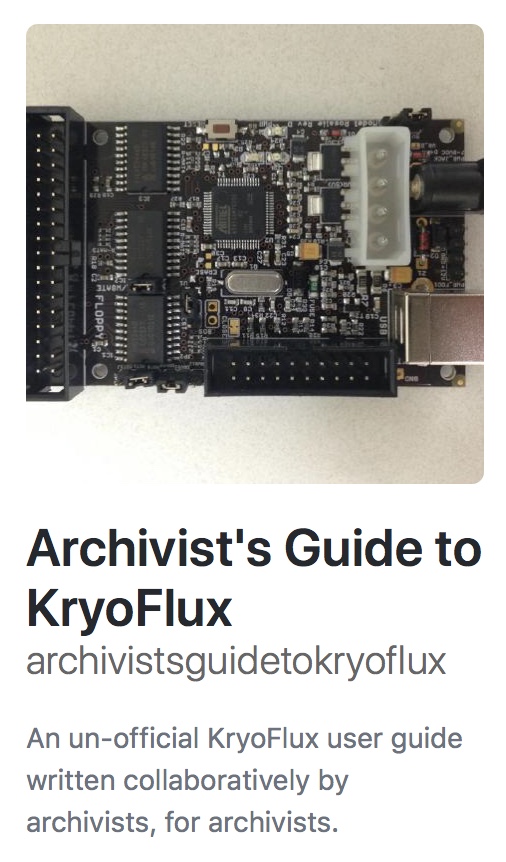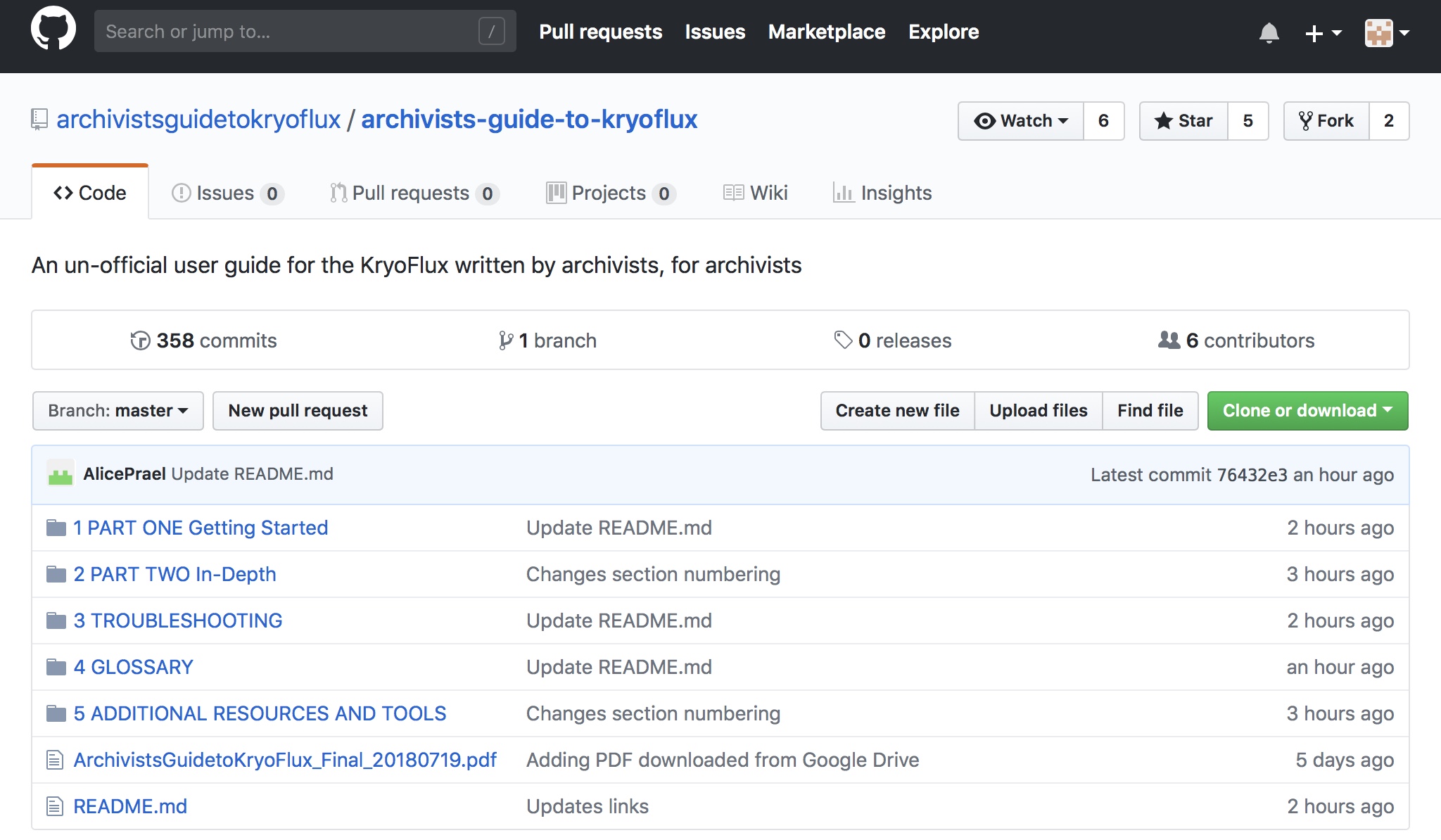The Archivist’s Guide to KryoFlux is a 63-page manual written to address an acute need for clear and accessible guidance on implementing, using, and leveraging the KryoFlux-a floppy disk controller that supports best practice for the preservation of valuable cultural heritage data stored on this type of legacy media. Though frequently identified as a powerful tool for archivists due to its support for a wide variety of legacy floppy disk encoding formats and its ability to effectively handle degraded data and generate bit-for-bit disk images, uptake of the KryoFlux among archives and digital preservation programs has been severely hampered by a lack of accessible documentation and training resources. At professional conferences and meetings, we regularly heard archivists and other LAM professionals express frustration at the lack of documentation and a reluctance to engage in user forums that assume a level of technical knowledge largely absent from traditional archival training.

Prompted by this gap in training needs, we formed a working group and set to work on what would become The Archivist’s Guide to KryoFlux. Edited by digital archivists from University of California at Los Angeles, Duke University, Emory University, University of Texas at Austin, and Yale University, this comprehensive user guide was written by and designed specifically for practitioners who would be using the KryoFlux to support digital preservation at their respective cultural heritage institutions.
The Archivist’s Guide to Kryoflux provides accessible information and guidance for the archival community which often struggles with the challenge of legacy born digital content. It includes:
- An introduction to the KryoFlux and its effectiveness as a tool for digital preservation;
- A guide to floppy disk formatting;
- Step-by-step instructions on installation and use of the KryoFlux (using both the command line interface and graphical user interface); • Troubleshooting tips and tricks;
- A list of additional resources.
The Guide is written in two parts. “Part One: Getting Started” provides practical guidance on how to set-up and begin using the KryoFlux and aims to be as inclusive and user-friendly as possible. It includes instructions for running KryoFlux using both Mac and Windows operating systems.

Instructions for running KryoFlux using Linux are also provided, allowing archives that use BitCurator (an Ubuntu-based open-source suite of digital archives tools) to incorporate the KryoFlux into their workflows. Part one addresses the functional differences between the KryoFlux’s command line and graphical user interfaces, and provides illustrated, step-by-step instructions for both.
“Part Two: In Depth” examines the features of KryoFlux and floppy disk technology in more detail.
This section introduces the variety of floppy disk encoding formats and provides guidance as to how KryoFlux users can identify them. Readers can also find information about working with 40-track floppy disks. Part two covers KryoFlux-specific output too, including log files and KryoFlux stream files. In addition to explaining these features of KryoFlux, part two suggests ways in which archivists might use them to support digital preservation best practice. Short case studies documenting the experiences of archivists at other institutions are also included here, providing real-life examples of KryoFlux in action.
Decisions as to what would be covered in The Archivist’s Guide to KryoFlux were based on our own experiences working with KryoFlux at our respective institutions and feedback from archivists and other professionals working in the field. The goal of the project was to provide a resource specific to the needs of archivists and, as such, we issued an open call for questions and comments over a sixmonth period during which time our initial draft was made openly available via Google Docs. We were gratified by the positive response from the archives and digital preservation communities and their interest in the project. At the end of the six-month review period, we had received over one hundred comments and suggestions. A final version, revised based on the valuable feedback we received, is now available via a dedicated GitHub page where we hope the archives and digital preservation communities will feel empowered to revise and update the guide as changes to the KryoFlux hardware and software occur.






























































































































